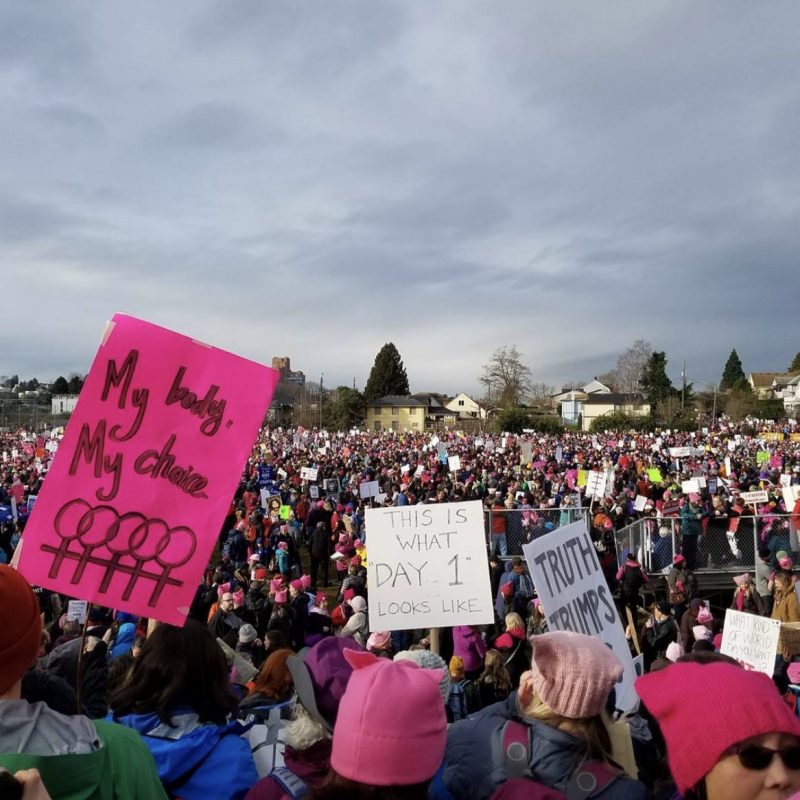
I am a feminist who has consumed pornography that could be interpreted as degrading to women at various points in my life. Can I still claim residence in the feminist community? Am I participating in my own oppression?
These questions of whether porn is inherently un-feminist led me to examine the existing debate between anti-pornography radical feminists and sex-positive feminists. However, I didn’t feel that this existing coverage of feminism’s relationship with pornography could be applied to my own experiences. Little research has been conducted on my generation of feminists’ perspectives on pornography.
I sought to fill this gap in the research during the fall 2021 semester. I interviewed eight self-identified feminist students at the University of Puget Sound – one male-identifying, three non-binary and four female-identifying — about their perspectives on pornography.
Every participant shared that at one point in their life they have watched, or currently do watch pornography. One third-year student, under the pseudonym Alexandra said, “I knew in my mind this isn’t what sex is and this isn’t how I should see it, but I still obviously would watch it and would masturbate because I was a 14-year-old kid,” in regards to pornography. So feminists are definitely watching porn, but how do they feel about it?
None of the eight participants described themselves as strongly in support of pornography: 25% were strongly against, 62.5% were against, 25% were neutral, 25% were in support and 0% were strongly in support of present-day pornography.
Within students’ discussions of the potential negative effects of pornography consumption and participation, there were four major themes: 1) pornography is an inaccurate depiction of sex, 2) pornography perpetuates violence, 3) pornography fetishizes certain demographics and 4) general anti-pornography-industry sentiments.
Over half of the participants argue that porn depicts sex unrealistically. Providing examples like porn’s demonstration of guaranteed orgasms, partners’ simultaneous orgasms, requirement of a dominant/submissive dynamic and so on.
One UPS junior Xavier expressed, “Especially in the gay community, it’s like a really toxic stereotype of like ‘Oh I’m either a submissive bottom or dominant top’ and…I feel like especially a lot of times pornography plays into like ‘oh they’re submissive because they’re feminine or you’re dominant so that means you get to be toxic or something.’” Pornography’s emphasis on the binary of a dominant and submissive dynamic, as Xavier referenced, can lead many porn consumers to worry if they don’t fit perfectly into one role or the other.
Students also observed ways pornography depicts violence at extreme rates creating a direct association within the viewer’s brain between violence and sex. Alexandra stated that displays of hyper-dominance or hyper-submission in pornography “can be quite abusive because I think it can give the green light in a lot of situations for men to be unnecessarily violent and aggressive in bed and have it be under the guise of ‘it’s kink.’”
In discussions of fetishization, some students spoke primarily or entirely of the inaccurate depictions of queer and transgender individuals in pornography — such as porn’s hyper-sexualization of queer individuals and particularly queer women because the porn labeled “lesbian” or “for women” is produced for straight men.
While students could list the negative effects of mainstream porn with ease, I found that few were able to identify benefits. Some mentioned porn as a beneficial exposure to new kinks, a fast and easy form of stimulation, a job as well as porn’s ability to assist viewers in understanding their sexual identity.
Students offered that ethically restructuring the industry allows for more potential benefits from pornography. To them, this means complete autonomy for sex workers in the pornography itself as well as regulations over the industry and a greater display of diversity (diverse bodies, sexual dynamics, sexual and gender identities, target audiences etc.). Participants predict that such changes create potential for ethical, guilt-free healthy forms of sexual stimulation.
Every participant showed their support for the sex workers acting in pornography, including two participants who suggested that pornography is too corrupt and impossible to fix. No individual directed their distaste or critiques of pornography toward the sex workers, but instead at the greater porn industry. This was one of the key differences between arguments made by radical feminists against pornography historically and the members of the newest generation of adult feminists with whom I spoke.
Participants credited these generational differences to new wave feminists’ refusal to put down other women, as well as their interpretation of pornography as less offensive or crude due to their early and increased exposure.
Learning that other feminists of my generation were able to justify their porn consumption helped to ease my own personal concerns of my feminist belonging. Every student I spoke to could identify negative elements of the pornography industry, but their identification of porn’s potential benefits demonstrated their hopefulness for the sex industry. New age feminists don’t see sex workers as worthy of pity and in need of a savior, instead respecting the labor of these individuals and demanding the industry and other feminists better support them, rather than accuse them of self-objectification. The rejection of women’s sex work as anti-feminist encourages me to understand my own sexual desires as not compromising of my feminist identification.
